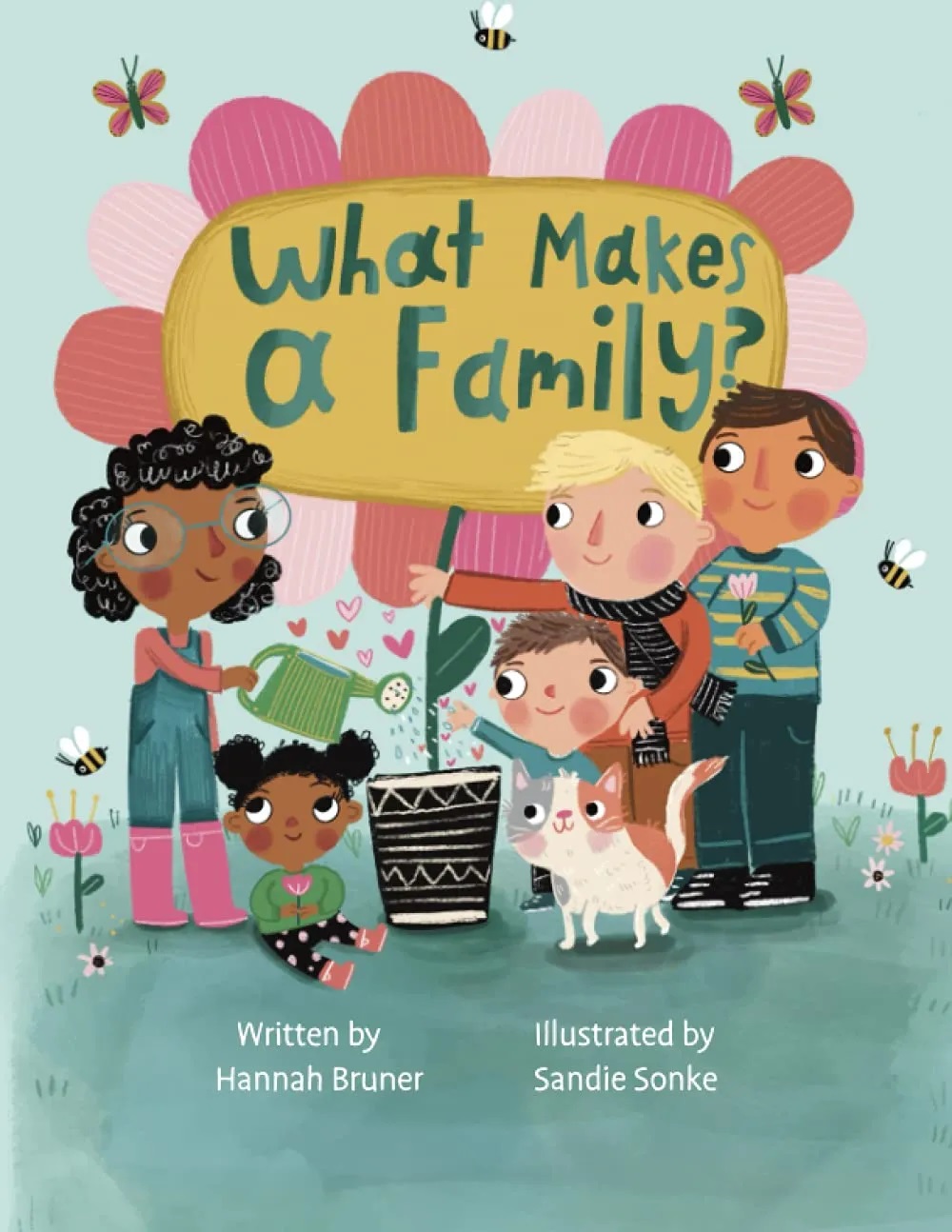
An Interview with Hannah Bruner
Hannah Bruner–educator, stepmother, and author of children’s book What Makes a Family–started using AmazeWorks curriculum in her classroom in 2019. The AmazeWorks anti-bias lens helped Hannah center belonging in her teaching, support her stepchildren as they navigated a shifting family structure, and share part of her own family’s story in her debut children’s book. We spoke with Hannah about the power of windows and mirrors in bringing belonging to life.
Stories about identities and lived experiences different from our own provide “windows” into the lives of others, while stories that reflect our personal identities and lives provide “mirrors.” Many children grow up without mirrors in their learning, creating a barrier to experiencing belonging in school. Hannah grew up with lots of mirrors. Coming from a nuclear family, she did not struggle to see herself and her family represented in her learning. When her school started using AmazeWorks, Hannah realized that her classroom library was not as diverse as she thought. Because she did not have many windows into other family structures growing up, she was not aware of all of the different ways families could look. She saw that this could affect the way students showed up at school. “I didn’t want my classroom to just be a place where they were accepted for who they were. I wanted it to be a place where they could see themselves reflected in their learning.” Amaze helped Hannah uncover some of her more hidden biases and ask herself what identities were not represented in her classroom.
Around the same time, Hannah’s family structure changed. She met her partner, Jeff, in 2018 and now serves as a stepmother to Jeff’s two children. Hannah’s stepdaughters needed support as they adjusted to living in their new family. They did not have other examples of blended families in their lives to help guide conversations about this period of transition and shared insecurities about having a family that was different. Hannah tried to take advantage of her resources as an educator by searching for books about children going through similar changes in their families. “I truly struggled to find a book that didn’t simply define multiple family structures but celebrated and uplifted them.” Hannah could not find her family’s story. She realized that the books she was looking for did not exist. Mirrors for children living in blended families were not just lacking, but missing from children’s libraries.
After learning about the importance of windows and mirrors in helping children experience belonging, Hannah wanted to create a mirror for her family and all families. She wrote her debut children’s book, What Makes a Family, sharing a message that while every family looks different, the common thread connecting families is the choice to love. This book shares a glimpse into the lives of blended families, foster families, adoptive families, and more. Hannah and her readers use What Makes a Family as a window to guide conversations with children about different family structures and as a mirror to talk about their own families.
Hannah’s experience teaching with AmazeWorks highlights the impact of representing multiple identities and lived experiences in children’s learning. Hannah says, “It truly for me was through the Amaze process and transformation that even opened my eyes to windows and mirrors… If I hadn’t been using the Amaze curriculum, I’m not sure I ever would have gone down the path of writing a book.” AmazeWorks helps more children see themselves reflected in what they read and truly engage in their learning.
Providing windows and mirrors in our children’s learning is a small part of the process to champion belonging, but its impact touches countless lives. Whose stories were you told growing up? Whose stories do you have yet to hear? How can you seek out narratives about different identities and lived experiences that have been underrepresented in your learning? When we ask ourselves these questions, we take strides to help every child experience belonging. Thank you, Hannah, for reaching out to AmazeWorks to share the impact that anti-bias education made in your life as an educator, caregiver, and now author. We are so grateful to educators, caregivers, and authors everywhere for their role in bringing belonging to life.